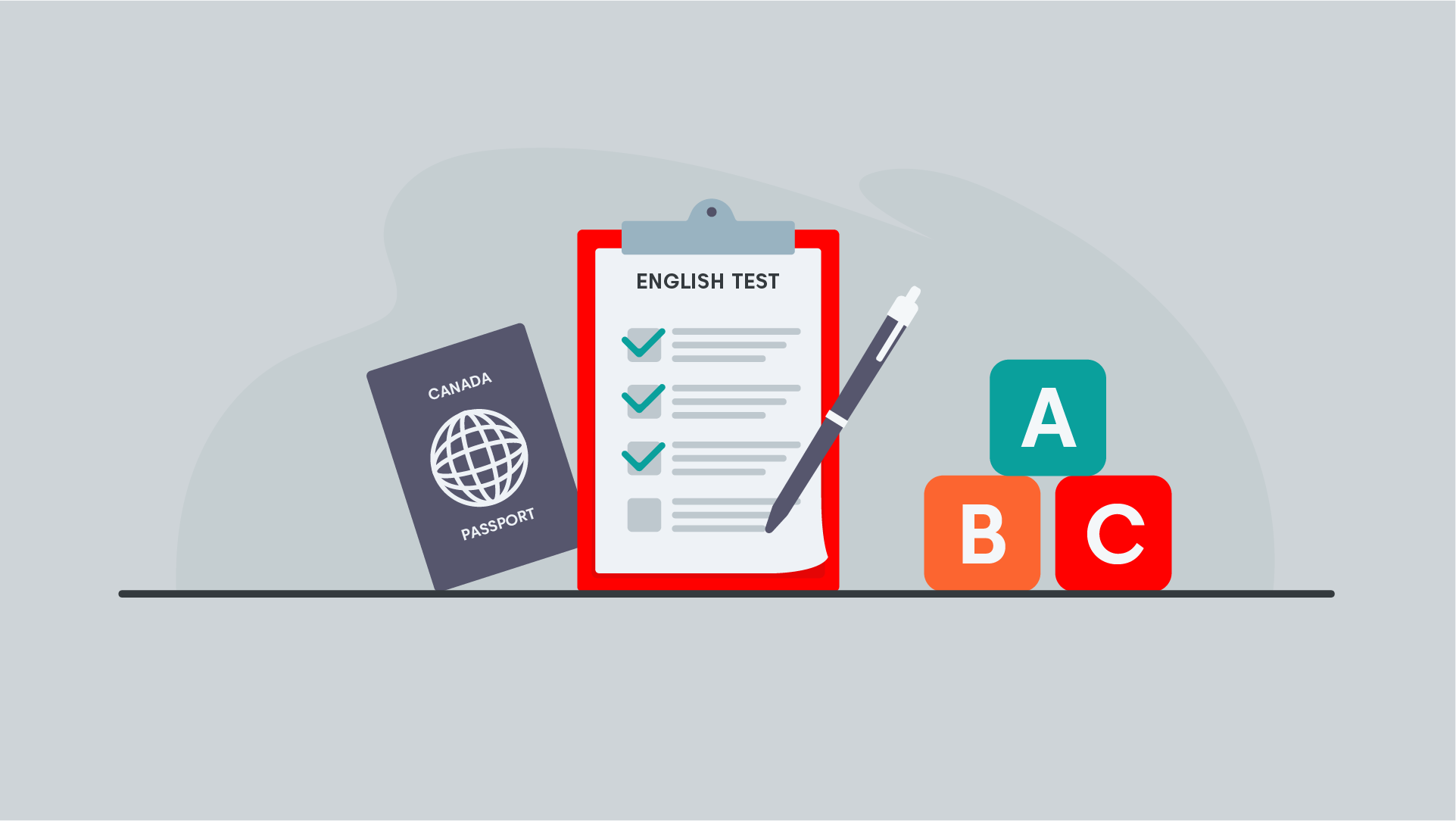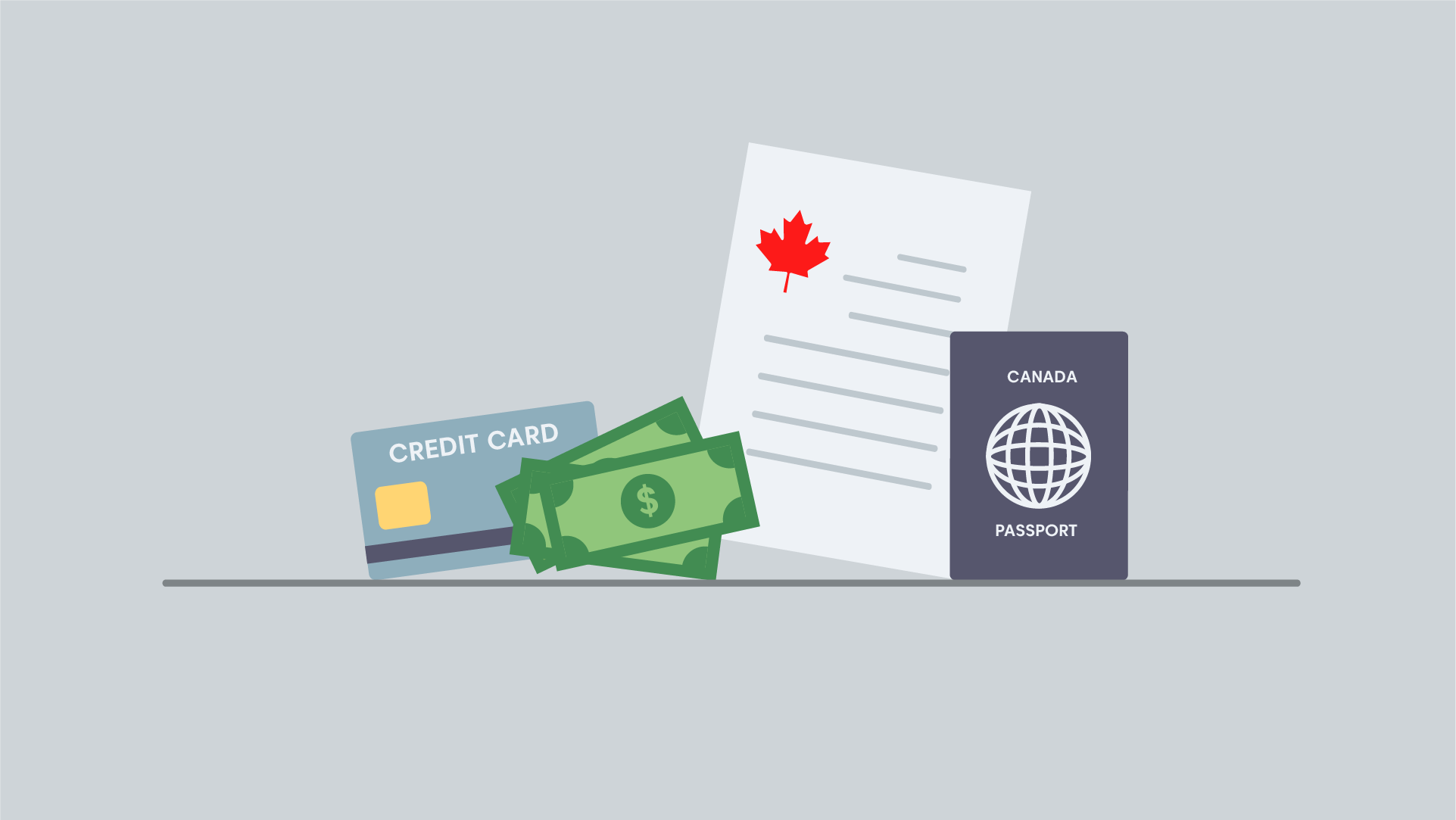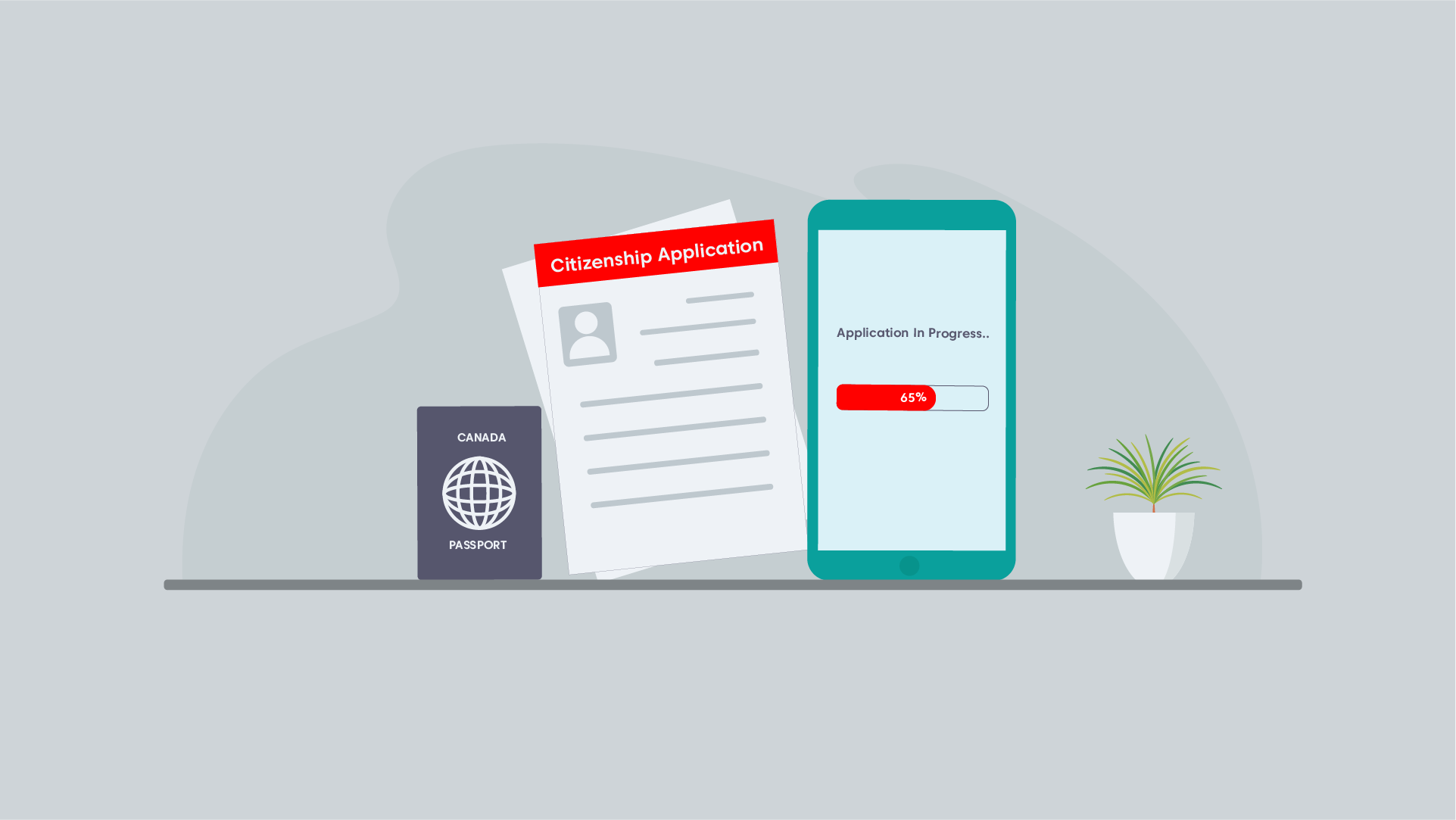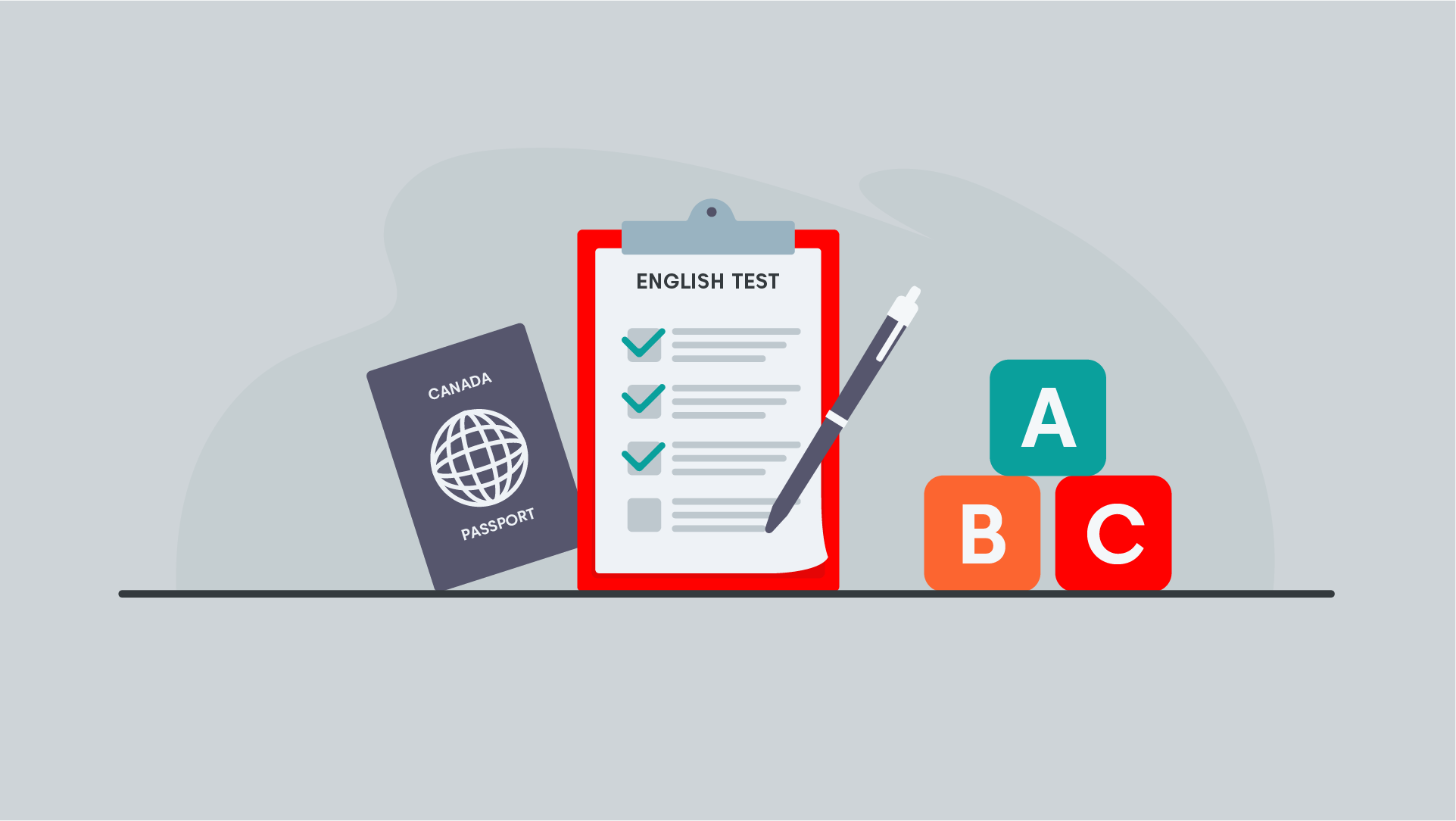Approved English Tests for Canada Immigration
By Umme Hani on Oct 23, 2024
- What is the Canada English Test?
- Who Needs to Take the Canada English Test?
- Which English Language Tests are Recognized by Canada?
- Key Differences Between IELTS and CELPIP
- Receiving Your IELTS or CELPIP Results
- FAQs
Did you know that a whopping 87.1% of Canada’s population communicates in English? It’s true! English, along with French, is one of Canada’s official languages. This means that if you plan to live, work, or apply for citizenship in Canada, having a good command of English is mandatory.
Canada places a strong emphasis on language skills to make sure that it’s easier for newcomers to integrate into society, participate in the workforce, and communicate effectively in their day-to-day lives.
How exactly do you prove your language skills? It’s simple– through English tests.
Let’s have a look at what these tests are, who needs to take them, and how they fit into your immigration or citizenship plans.
What is the Canada English Test?
The Canada English test is a language proficiency exam required for almost all immigration pathways. The purpose of this test is to demonstrate one’s ability to communicate effectively in one of Canada’s official languages—English.
Also referred to as a citizenship language test, evaluates how well you can speak, understand, and write in English. These tests aren't just a formality – they’re designed to make sure you can comfortably navigate everyday life in an English-speaking country.
Who Needs to Take the Canada English Test?
The Canada English test is required for various immigration and citizenship processes, including:
- Permanent Residency Applicants
- Canadian Citizenship Applicants
- International Students
- Temporary Residents (Work Permits)
- Federal Skilled Trades Program (FSTP)
- Provincial Nominee Program (PNP)
Which English Language Tests are Recognized by Canada?
The Canada English test is an integral part of the process for many immigration and citizenship applications. The Canadian government recognizes two main tests: IELTS and CELPIP.
IELTS (International English Language Testing System)
IELTS is one of the most well-known English tests worldwide. It’s available in two versions: Academic and General Training. For immigration and citizenship purposes, you’ll need the General Training version. This test assesses your ability to listen, read, write, and speak in English. It’s designed to show that you can handle everyday situations in Canada, from conversations with neighbors to following instructions at work.
IELTS Scoring System
The IELTS (International English Language Testing System) uses a band score system to measure a candidate’s proficiency in English. Each section of the test—Listening, Reading, Writing, and Speaking—is scored on a scale from 0 to 9, with 9 being the highest level of proficiency.
IELTS Band Score Scale
Here’s the IELTS band score system presented in a table:
| Band Score | Proficiency Level | Description |
|---|---|---|
| Band 9 | Expert User | Has full command of the language with complete fluency. |
| Band 8 | Very Good User | Excellent grasp of the language, with only minor errors. |
| Band 7 | Good User | Can use the language effectively with occasional mistakes. |
| Band 6 | Competent User | Communicates well overall but makes some mistakes. |
| Band 5 | Modest User | Understands and communicates, but with frequent errors. |
| Band 4 | Limited User | Basic understanding but struggles with complex language. |
| Band 3 | Extremely Limited User | Can grasp only general meaning in simple situations. |
| Band 2 | Intermittent User | Severe difficulty in communication, understanding is minimal. |
| Band 1 | Non-User | Cannot use the language beyond a few isolated words. |
| Band 0 | Did Not Attempt the Test | No test was taken. |
How is Each Section of the IELTS Scored?
- Listening: 40 questions; scores out of 40 are converted to the band scale.
- Reading: 40 questions; also scored out of 40 and converted.
- Writing: Two tasks evaluated based on task achievement, coherence, vocabulary, and grammar.
- Speaking: Assessed on fluency, coherence, pronunciation, vocabulary, and grammar during an interview.
How IELTS Scores Are Calculated
Each of the four sections (Listening, Reading, Writing, and Speaking) is scored individually on the 0 to 9 scale.
The overall IELTS score is an average of the four section scores. It’s rounded to the nearest whole or half band (e.g., an average of 6.25 would be rounded to 6.5).
What is Considered a “Good” IELTS Score for Canada Immigration and Citizenship?
- For Permanent Residency: Minimum IELTS score depends on the immigration program (e.g., Express Entry typically requires a score of CLB 7, which corresponds to Band 6 in IELTS).
- For Citizenship: To meet the language requirements for Canadian citizenship, a minimum score of CLB 4 (which corresponds to Band 4 in IELTS) is required for speaking and listening.
How to Register for the IELTS Test in Canada
Here’s how you can register for your IELTS test:
Step 1: Choose the IELTS Test Type
As mentioned before, there are two main versions of the IELTS. However, for Canadian immigration, whether Express Entry or PR, you’ll have to take the IELTS General Training: Required test.
Step 2: Find a Test Center in Canada
Go to the official IELTS website and search for test centers in your city. You’ll find test centers in major cities across Canada, including Toronto, Vancouver, and more. Get more information here.
Step 3: Pick a Test Date
Choose a test date that works for you. Dates may vary depending on the location and the format (computer-based or paper-based). Try to register early as seats fill up quickly, especially in larger cities.
Step 4: Register Online
Create an account on the IELTS website or the test center’s local site. Complete the registration form, providing details, such as ID information. Remember to bring the same ID to the test center on the exam day.
Step 5: Pay the Test Fee
The IELTS test fee in Canada is around CAD 300-320, depending on the test center and format. Pay online using a credit or debit card. After registration and payment, you’ll receive a confirmation email with test details.
Where to Take the IELTS Test in Canada
IELTS test centers are spread across many Canadian cities, so finding one near you should be easy. Here’s a list of some major IELTS test centers in Canada:
| City | Test Center Details |
|---|---|
| Toronto | Several test centers are available, including those at language schools, universities, and exam facilities. |
| Vancouver | Offers both computer-delivered and paper-based tests in multiple locations. |
| Montreal | Test centers in Montreal offer IELTS tests in English and French. |
| Calgary | Multiple test centers are available for both General and Academic tests. |
| Ottawa | Test centers in the capital city are well-suited for both residents and students. |
| Edmonton, Winnipeg, Halifax | Centers are available across these and other Canadian cities. |
CELPIP (Canadian English Language Proficiency Index Program)
The CELPIP test is specifically Canadian. It’s also offered in two versions: CELPIP-General and CELPIP-LS. If you’re taking an English test for Canadian citizenship, you’ll need the CELPIP-LS version. This one focuses only on listening and speaking skills, which are critical for daily communication.
CELPIP Scoring System
The CELPIP uses a 12-point scale to measure English proficiency. This test evaluates four pivotal skills: listening, speaking, reading, and writing. Each skill is scored individually, and your final scores are presented as a level between 1 and 12. A score of 12 represents the highest level of proficiency, while 1 indicates the most basic level of language skills.
CELPIP 12-Point Scale Breakdown
Here’s a quick overview of the CELPIP 12-point scale:
| CELPIP Level | Description |
|---|---|
| Level 12 | Advanced proficiency in English, able to communicate effectively in all situations. |
| Level 11 | Strong proficiency, with minor errors that don’t affect overall communication. |
| Level 10 | High proficiency, effective communication with minimal mistakes. |
| Level 9 | Competent in professional and social interactions. |
| Level 8 | Good command of the language, with occasional errors. |
| Level 7 | Adequate understanding and communication in familiar situations. |
| Level 6 | Can understand and communicate basic ideas with some difficulty. |
| Level 5 | Basic communication skills but struggles with complex language. |
| Level 4 | Limited proficiency, can handle only simple conversations. |
| Level 3 | Minimal ability to use English, very basic communication. |
| Level 2 | Very limited understanding of English, significant communication barriers. |
| Level 1 | Little or no ability to communicate in English. |
What is Considered a “Good” CELPIP Score for Canada Immigration and Citizenship?
Different immigration programs in Canada require specific CELPIP scores. Here’s a quick guide to what scores you need:
- Express Entry:
- You normally need at least CLB Level 7 (equivalent to CELPIP Level 7) for most skilled worker programs.
- For higher scores under Express Entry, aiming for CELPIP Level 9 or higher can boost your ranking in the Comprehensive Ranking System (CRS), giving you more points.
- Provincial Nominee Programs (PNP):
Score requirements vary by province, but most provinces expect CELPIP Level 7 or higher for skilled workers.
- Citizenship:
For Canadian citizenship, you must meet the minimum requirement of CLB Level 4, which is equivalent to CELPIP Level 4.
How to Register for the CELPIP Test in Canada
You can register for the CELPIP test in Canada entirely online. Here’s a step-by-step guide:
Step 1: Choose the Right Test Type
Before you register, make sure you know which version of the CELPIP test you need:
- CELPIP-General - Express Entry, Provincial Nominee Programs (PNP), and Permanent Residency applications.
- CELPIP-LS - Specifically for Canadian citizenship applications.
Step 2: Visit the Official CELPIP Website
Go to the official CELPIP website to begin the registration process. Create an account by entering your personal information (name, email, etc.). Use your full legal name as it appears on your ID documents. This will be important when you take the test.
Step 3: Select a Test Date and Location
Once your account is set up, select your preferred test type (General or LS). Choose a test location near you and a date that works for you.
Step 4: Pay the Test Fee
The cost of the CELPIP test in Canada is around CAD 280 (including taxes) for the CELPIP-General test. Prices may vary slightly depending on the test center location.
You can pay the registration fee online using a credit card or debit card.
Step 5: Receive Confirmation
Once you’ve registered and paid the fee, you’ll receive a confirmation email with your test date, time, and location details. Check your email regularly for any updates or instructions leading up to the test day.
Where to Take the CELPIP Test in Canada
The CELPIP test is widely available across Canada, with many test centers offering both the CELPIP-General and CELPIP-LS tests.
| City | Test Center Details |
|---|---|
| Toronto | Multiple test centers, including those in downtown Toronto and surrounding areas. Both CELPIP-General and CELPIP-LS tests are available. |
| Vancouver | As the home city of the CELPIP test, Vancouver offers several test centers that provide both test formats. |
| Montreal | Test centers in Montreal offer the CELPIP test for English speakers. Both the General and LS versions are available. |
| Calgary | Test centers throughout Calgary provide options for both the General and LS tests. |
| Ottawa | The capital city offers multiple test centers for CELPIP, making it convenient for those in the region. |
| Other Cities | The CELPIP test is also available in other major cities like Edmonton, Winnipeg, Halifax, and more. |
Key Differences Between IELTS and CELPIP
Here’s an overview of the main differences between the IELTS and CELPIP tests:
| Aspect | IELTS General | CELPIP-LS |
|---|---|---|
| Skills Assessed | Listening, Speaking, Reading, Writing | Listening, Speaking |
| Purpose | Used for immigration and academic purposes | Specific to citizenship in Canada |
| Test Versions | General Training (for immigration) and Academic | CELPIP-General (for immigration) and CELPIP-LS |
| Ideal for | Applicants for permanent residency, students | Applicants for Canadian citizenship |
| Minimum Score Required | CLB Level 4 or higher | CLB Level 4 or higher |
| Focus | Broad assessment of English skills for everyday and professional communication | Focuses only on listening and speaking for basic communication |
| Test Format | Internationally recognized, used in multiple countries | Specific to Canada, designed for Canadian contexts |
Receiving Your IELTS or CELPIP Results
After completing your IELTS or CELPIP test, the next step is waiting for your results. Here’s what to expect:
How Long Does It Take to Get Your Canada English Test Results?
IELTS Results
- Paper-Based IELTS: If you took the paper-based test, your results will be available 13 calendar days after the test date.
- Computer-Delivered IELTS: For those who took the computer-delivered IELTS, results are typically available much faster, usually within 5 to 7 calendar days.
You can view your results online on the official IELTS website using your test details, and you’ll also receive a hard copy of your Test Report Form (TRF).
CELPIP Results
- CELPIP-General and CELPIP-LS: For both versions of the CELPIP test, results are usually available within 4 to 5 calendar days after you take the test.
Like IELTS, CELPIP results are posted online, and you’ll be notified via email when they’re available.
How to Send Results to IRCC or Other Institutions
IELTS Results
If you’re applying for immigration or citizenship, you don’t need to manually send your results to IRCC. You’ll provide the Test Report Form (TRF) number when you submit your application, and IRCC can verify your results directly through the IELTS system.
CELPIP Results
Just like IELTS, you don’t need to send your results manually to IRCC. When applying, you’ll include your CELPIP Registration Number, and IRCC will access your results directly.


